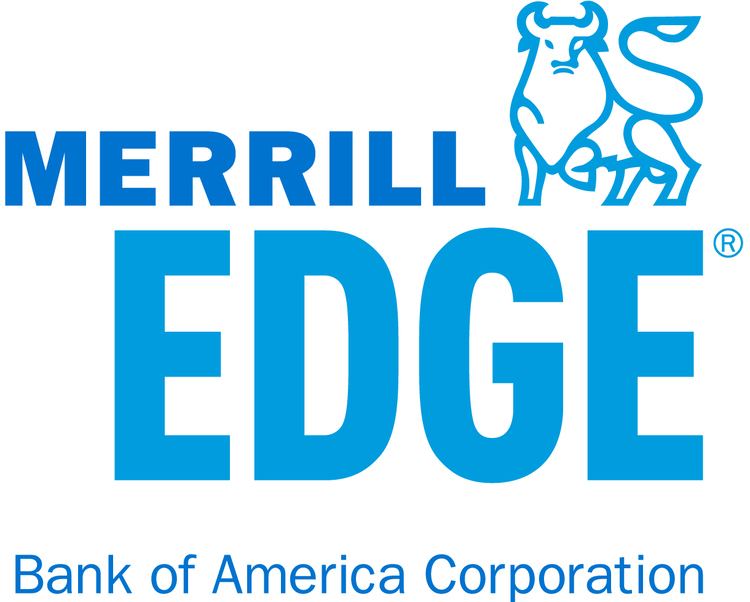Area served United States Products Discount brokerage Number of employees 2,500 | Key people Aron Levine Founded 21 June 2010 | |
 | ||
Profiles | ||
Merrill Edge is an online discount brokerage service provided by Bank of America Merrill Lynch. Launched on June 21, 2010, Merrill Lynch is a part of Bank of America's retail banking division.
Contents
Merrill Edge was created to merge Bank of America Online Investing (Quick & Reilly) and Merrill Lynch's research, investment tools, and call center counsel. When it was established, Merrill Edge had 500,000 Bank of America customers. The firm focuses on investors with between $100,000 and $250,000 in investable assets. In 2015, the service held $118 billion from two million customers and employed 2,500 advisers working in bank branches and call centers.
History
Launched on June 21, 2010, Merrill Edge is a "a no-frills brokerage unit" of parent company Bank of America's retail banking division. Created after Merrill Lynch became a subsidiary of Bank of America in 2008, it contains the Merrill Lynch name and its employees are included in Merrill Lynch's number of employees. It merged Bank of America Online Investing (Quick & Reilly) and Merrill Lynch's research, investment tools, and call center counsel. At its inception, Merrill Edge had 500,000 customers from Bank of America's current clients. Bank of America launched the product to compete with Charles Schwab Corporation and Fidelity Investments for the numerous fledgling investors unprepared for comprehensive advice. Bank of America aimed to build brand loyalty among these younger investors who generally have strong technological skills and appreciate a higher degree of openness and personal oversight of their accounts. It is intended for well-educated clients who want to invest between $100,000 and $250,000. Other Merrill Edge competitors are cheap automated Internet advising services like Wealthfront or Personal Capital.
In 2015, the five-year-old Merrill Edge had $118 billion in 2 million customers' investable assets. It accumulated the assets through three main avenues: existing Bank of America customers (which accounted for around a third of the assets held), Merrill Lynch referrals (which accounted for a marginally higher proportion of the assets), and marketing (which accounted for the rest). Bank of America added videoconferencing kiosks to their bank branches in the Los Angeles metropolitan area and the Washington metropolitan area to promote Merrill Edge and to allow customers to receive counsel from employees based in Arizona, Florida, and New Jersey. Bank of America marketed Merrill Edge on their locations' windows and automated teller machines. The service allows customers three options for doing trades: making the trades themselves, handing over for every order a $6.95 fee, and paying a fee of 1% of the capital for a separately managed account.
In 2015, Merrill Edge had 2,500 advisers working in bank branches and call centers. Roughly 1,500 of the advisers worked in the bank branches. The Wall Street Journal reported in 2015 that Bank of America intends to increase by twofold Merrill Edge's banking branch employee number. According to Reuters, the service's "financial solution advisers" are "licensed broker-dealers and bankers who are paid a salary", whereas full-service brokers receive commissions. Aron Levine, the head of Preferred Banking and Merrill Edge, manages the bank branch advisers.
Referrals
Merrill Lynch brokers were told to refer customers with less than $250,000 in investments to Merrill Edge. The intent was for the brokers to focus on wealthier investors and for Merrill Edge to reciprocate by sending customer with more than $250,000 in investments to Merrill Lynch. In 2015, the Merrill Lynch broker incentive system changed to give brokers no money for managing accounts less than $250,000. In 2014, Merrill Edge referred 30,000 customers to Merrill Lynch and U.S. Trust. Converted referrals gave Merrill Lynch an additional $4 billion to manage, which when apportioned among Merrill Lynch's 14,000 advisers is roughly $285,700 and two referrals per adviser. When referred to Merrill Lynch, Merrill Edge's customers sometimes do not migrate their accounts because of the higher costs for trades.
Products
In 2012, Merrill Edge released Face Retirement, a product that age progresses a submitted photo of a person. The aim of the tool is to convince people to save for retirement earlier because a study has shown that younger people who think of themselves being older save more.
In a 2015 interview with The Wall Street Journal, Aron Levine, head of Merrill Edge, said the company was considering an "automated advice service". Dozens of Bank of America workers worked on a prototype of the product, which is planned for release in 2016. Merrill Edge will begin offering to customers robo-advisors that employ algorithms populated with dozens of components. Bank of America customers who invest less than $250,000 usually do not receive counsel from Merrill Edge employees, so the robo-advisors would enable them to receive advice.
Reception
NerdWallet writer Arielle O'Shea gave Merrill Edge a rating of 4.5 out of 5. She listed the service as "best for lowest-cost penny stock trades" because Merrill Edge offers a $6.95 flat commission with no extra fees for penny stocks. O'Shea said the downsides to Merrill Edge's penny stock offering are that penny stock offerings are restricted and portfolios cannot contain exclusively penny stocks. She also noted that Merrill Edge lacks no-commission exchange-traded funds.
